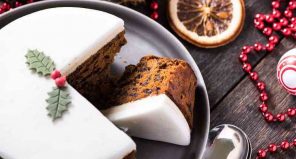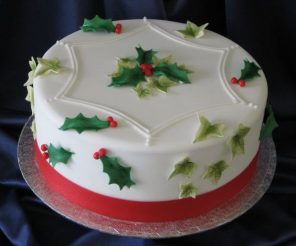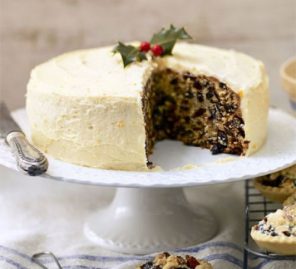 I think the best thing about Christmas is that it gives you a chance to carry on traditions. There’s a lot of comfort in continuity, and whether that means you buy Christmas PJ’s every year and wear them on Christmas Eve or you use vintage ornaments and lights to decorate your tree, those traditions are what make Christmas more meaningful.
I think the best thing about Christmas is that it gives you a chance to carry on traditions. There’s a lot of comfort in continuity, and whether that means you buy Christmas PJ’s every year and wear them on Christmas Eve or you use vintage ornaments and lights to decorate your tree, those traditions are what make Christmas more meaningful.
I do the PJ’s, the opening of one gift on Christmas eve, and since they’ve started having them Vancouver, the yearly visit to the German market to celebrate my German and Austrian heritage. Because I grew up watching my Grandma do the Christmas baking, I also do a lot of traditional baking too. Now I look back and wish I had paid more attention or helped her more when she did all of that baking for a family gathering of 30 or more people, but I have great memories of enjoying the sugar cookies, breads, and Christmas cupcakes that she made. The one thing I didn’t enjoy? Her Christmas fruitcake.
Looking back I always knew that the fruit cake was there, laid out in slices on a wrapper and covered in marzipan, but I skipped it every time. I didn’t like the candied cherries or raisins, and when there are so many other options to choose from, a kid will always grab another cookie instead of a piece of traditional cake packed with fruit. Now that I know what went into her making it and why she did it, I wish I had tried it. I know you can’t go back, but moving forward, it’s one tradition that I’ve been determined to carry on for her.
History of Christmas Cake
Christmas cake is a European tradition. It dates back to the 16th century when wealthy families would create fruit cakes for Christmas and Easter. When my Grandma’s parents came over from Germany in the late 1800’s, they continued the fruitcake tradition by making it every year at Christmas. It was also served at weddings for good luck, and back when my parents got married 46 years ago, my Grandma made sure they had boxed slices of fruit cakes as take-away gifts.
Incredibly, both my great grandmother and my own grandma never used recipe to make it. She told me they both just remembered what to do, so there wasn’t a recipe to pass down to me when I wanted to start making it too.
I managed to find a recipe that’s pretty close to what I remember of her fruit cake, and even if it’s a little different, I still enjoy the traditional process of making it. I also really like eating it now, and when I have friends over at Christmas, they all try a slice too. The mixture of fruit and spices makes the entire house smell amazing, and the taste is out of this world. If all you’ve heard of Christmas cake is that it’s as heavy as a puck and hard to eat, you have to try this recipe.
Although it’s November, the time to start making traditional Christmas cake is right now. That’s because, for the absolute best fruit cake, you have to randomly add rum to it and let it soak for about six weeks in an airtight container.
Here’s the recipe from BBCGoodfood.com I use to make a traditional Christmas cake. Maybe this is the year you carry on an old tradition by making it too.
Ingredients
1kg mixed dried fruit (use a mix of raisins, sultanas, currants, cherries, cranberries, prunes or figs)
Zest and juice 1 orange
Orange
Zest and juice 1 lemon
Lemon
150ml brandy
Brandy, Sherry, whisky or rum, plus extra for feeding
250g pack butter, softened
200g light soft brown sugar
175g plain flour
100g ground almond
½ tsp baking powder
Baking powder
2 tsp mixed spice
1 tsp ground cinnamon
¼ tsp ground cloves
100g flaked almond
4 large egg
1 tsp vanilla extract
Directions
Put the dried fruit, zests and juice, alcohol, butter and sugar in a large pan set over a medium heat. Bring to the boil, then lower the heat and simmer for 5 mins. Tip the fruit mixture into a large bowl and leave to cool for 30 mins.
Heat oven to 300F. Line a deep 20cm cake pan with a double layer of baking parchment, then wrap a double layer of newspaper around the outside – tie with string to secure.
Add the remaining ingredients to the fruit mixture and stir well, making sure there are no pockets of flour. Tip into your prepared cake pan, level the top with a spatula and bake in the centre of the oven for 2 hrs.
Remove the cake from the oven, poke holes in it with a skewer and spoon over 2 tbsp of your chosen alcohol. Leave the cake to cool completely in the tin.
To store, peel off the baking parchment, then wrap well in cling film. Feed the cake with 1-2 tbsp alcohol every two weeks until you’re ready to serve it. Don’t feed the cake for the final week to give the surface a chance to dry before icing.
You can ice your fruit cake with marzipan, but if you’re feeling adventurous you can try this apricot butter icing from BBCGoodfood.com. I think it’s much nicer on the cake than marzipan.
Apricot butter icing
Ingredients
150g butter, softened
150g apricot jam
275g icing sugar, sifted
Directions
Make the icing quickly by beating the butter, jam and icing sugar until pale. Don’t allow the butter to get too warm or over beat as the icing might split. Swirl all over the cake, then leave in a cool place on the counter to set.
I recommend dressing up your Christmas cake with garnishes. I have a holly tree right outside my living room windows and I know I’ll be making liberal use of it to garnish my cake this year.
Christmas cake is the perfect way to kick off six weeks of Christmas baking, and if you’re ready to begin your baking now, here are a few great kitchen items that will get you started. If you have your own Christmas traditions, be sure to share in the comments.
|
|
|
|






